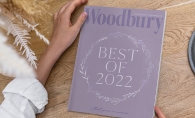Name that holiday: It’s celebrated by millions of people around the globe across five different religions and commemorates nothing less than the triumph of good over evil. Give up? It is Diwali, and it is divine in both senses of the word—an occasion that is lovely and also honors the gods.
Diwali is an ancient Hindu holiday that draws on concurrent rivers of meaning. According to one account, the word is a contraction of Deepavali, which means “row of lamps” in Sanskrit. Another story contends that the word Diwali comes from Deepa Oli in the Tamil language and means brightness of lights. Like other holidays around the globe during this dark time of year, Diwali commemorates the end of the harvest, the return to light, and hope for a prosperous year ahead. Think Hannukah, Rosh Hashanah, Thanksgiving, the winter solstice and Christmas all rolled into one fabulous, profound celebration.
On October 30, the large Indian community in Woodbury will enjoy a dazzling extravaganza of food, music and prayer. Residents Srilekha and her husband Senthil organize a vibrant party for about 150 friends, relatives and coworkers.
Srilekha and her family moved to Minnesota in 2012. Their son, Sanjay, age 4, attends a local preschool program and their 7-year-old daughter, Akshara, is a second grader at Woodbury Elementary School. The 3M corporation is a major employer for Indians; Senthil is an employee of Accenture and works from his client 3M’s site. “[We] like almost everything about Woodbury,” Srilkeha says. “It has the essence of a typical U.S. lifestyle yet offers a peaceful life. The people are very helpful and great. We have a lot of Indian communities here and it makes us feel at home.”
For Srilekha and her family, Diwali is a full day, starting with sunrise and lasting late into the night. During Diwali, the family gets up early for an oil bath known as Ganga snanam. It’s a symbolic representation of taking a dip in the holy Ganges River in India. “It is believed that all our sins and impurities are washed away with this Ganga snanam,” she says. “The killing of evil calls for celebration and is followed by purification.” Next, the family performs a pooja (ritual ceremony and prayer) to Lakshmi, the goddess of prosperity and good fortune. In preparation, everyone cleans the house like crazy and wears beautiful new clothes. The elders make sweets for the pooja with plenty left over to savor among fellow celebrants. “We fire up a lot of sparklers during the day, and in the evening we light mud lamps at home,” Srilekha says. “Lighting lamps represents dispelling of ignorance and removing veils that cloud beliefs.”
It is a delightful time—music, games, new clothes, decorations, and oh yes, the food, the food, the food! The abundance of things to eat signifies the year’s richness to come and, fittingly, the holiday is especially heavy on the sugar. Confections like gulab jamun (deep-fried treats made of milk, ghee—clarified butter—sugar and cardamom) and ladoo (sweetened balls of chickpea, semolina and coconut) are wildly popular. Vegetarian dishes such as chole (spicy chickpea curry), samosas (a finger-food stuffed with raisins, cashews, potatoes and peas) and complicated biryanis (rice pilafs) are full of heady spices like chili, ginger and cilantro.
“We buy the ingredients in Indian grocery stores,” Srilekha says. “We are happy that we get all the ingredients in the Twin Cities, and the Spice Bazaar in Woodbury offers a good supply of them.”
The holiday is richly textured with mythology. Not only does each day of the five-day observance have special significance in Indian lore; various areas of the country embrace different meanings. The North Indian business community starts their financial new year on Diwali. For them, Diwali celebrates the return from war of the exiled Lord Rama after he vanquished the demon king Ravana. According to legend, people lit oil lamps to guide the royal family’s path home and so it is celebrated on the darkest night of the month, that of the new moon.
In Southern India, Diwali marks the conquering of the evil king Asura Naraka, who imprisoned thousands of inhabitants. In gratitude, Southern Indians festoon their houses with kolam, patterns made with kavi (red oxide). The pooja room brims with betel leaves, betel nuts, plaintain fruit, flowers, sandalwod paste, kumkum, gingelly oil and scented turmeric powder.
Northern and Southern Indians in Woodbury celebrate Diwali together despite the regional distinctions. Woodbury’s Diwali festival happens on whatever weekend is closest to the holiday, since it is not yet recognized as an official holiday in the United States. In India, new film releases entertain the hordes returning from morning services at the temple. Srilekha’s most cherished childhood memories include “bursting crackers” in the early morning streets and watching special TV shows before exchanging sweets and snacks with the neighbors.
Diwali in America is rich with nostalgia and memories for the transplanted Indian community. It’s also an opportunity to teach others about Indian culture and to pass cherished traditions on to young American-born Indians. About 2 million people celebrate the holiday in the USA and the numbers are steadily growing. In 2009, President Obama was the first to attend Diwali festivities at the White House.
Though the Woodbury Diwali party is not officially open to the public, its hosts are very welcoming to non-Hindu friends. Take the opportunity to share some wonderful food and bid farewell to darkness. It’s going to be a rich, sweet year.









